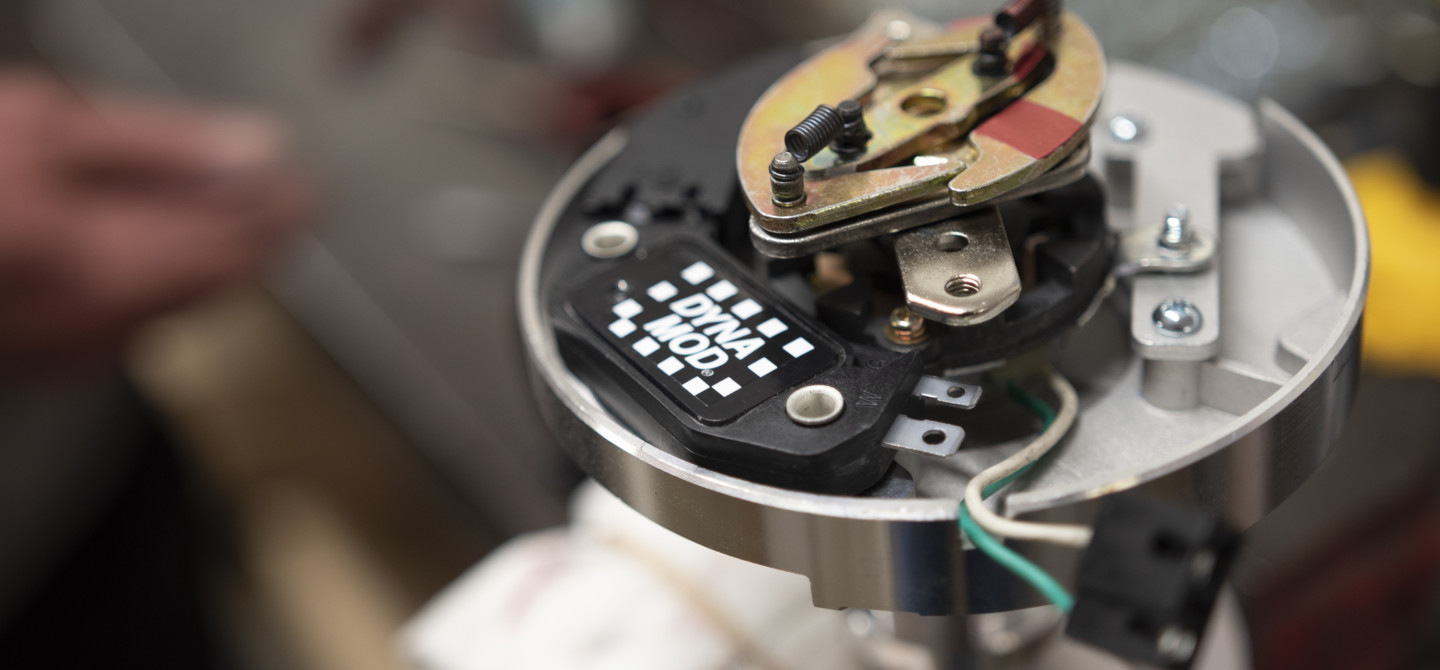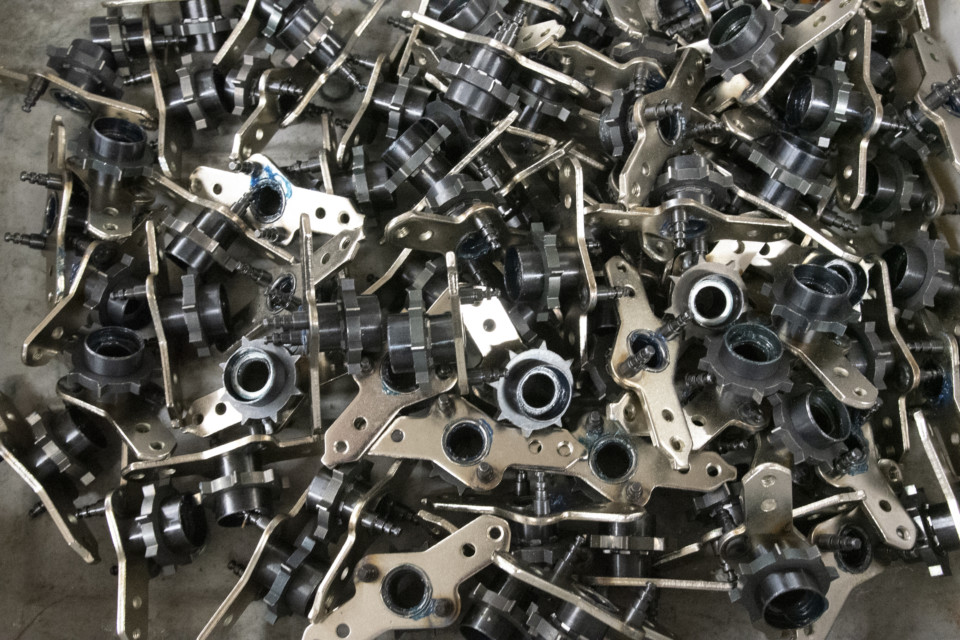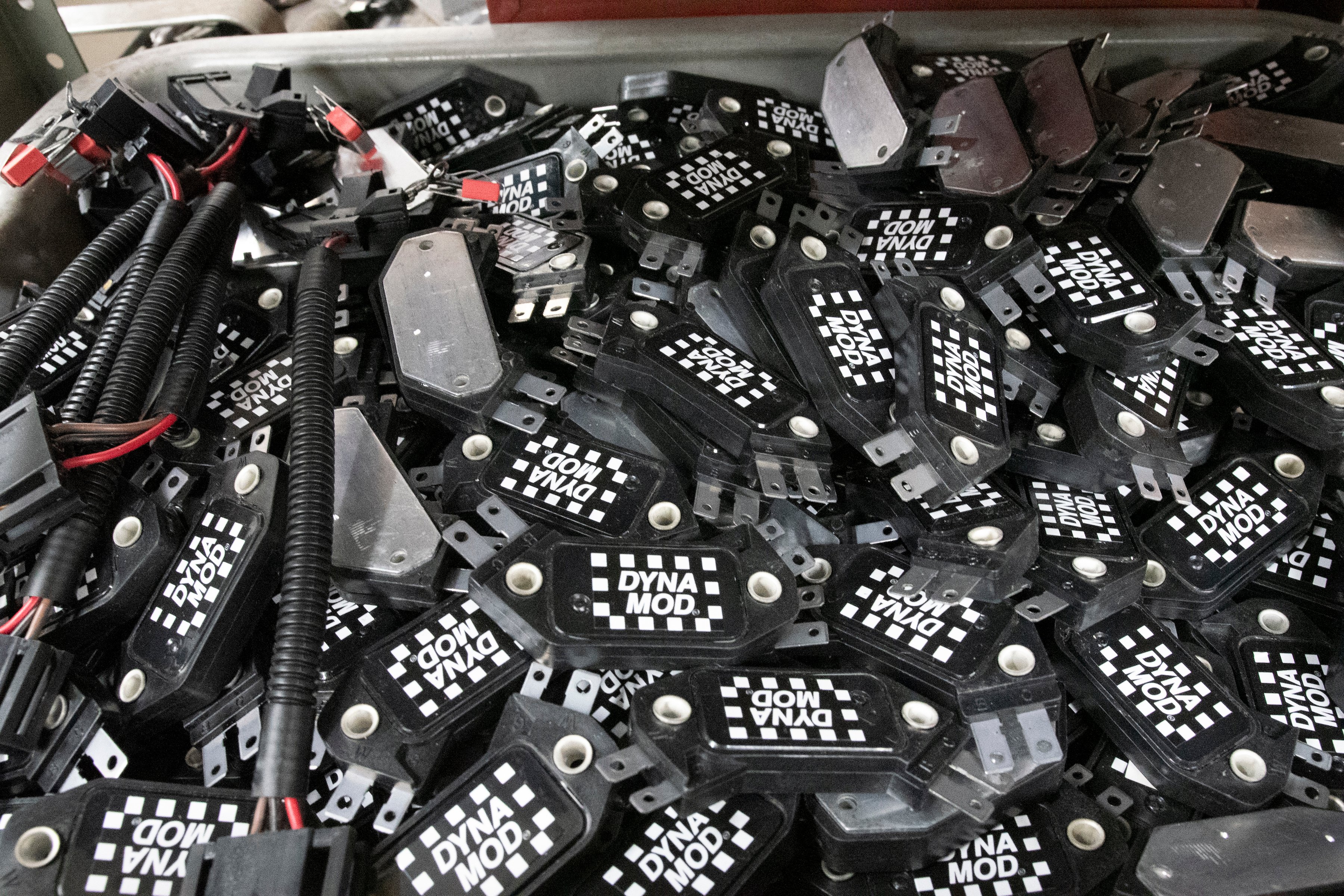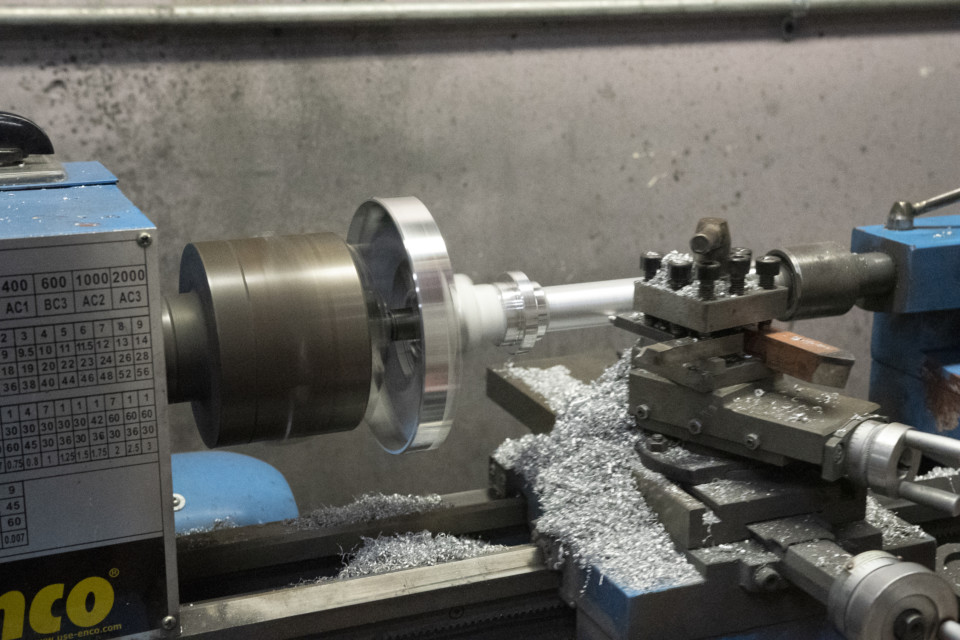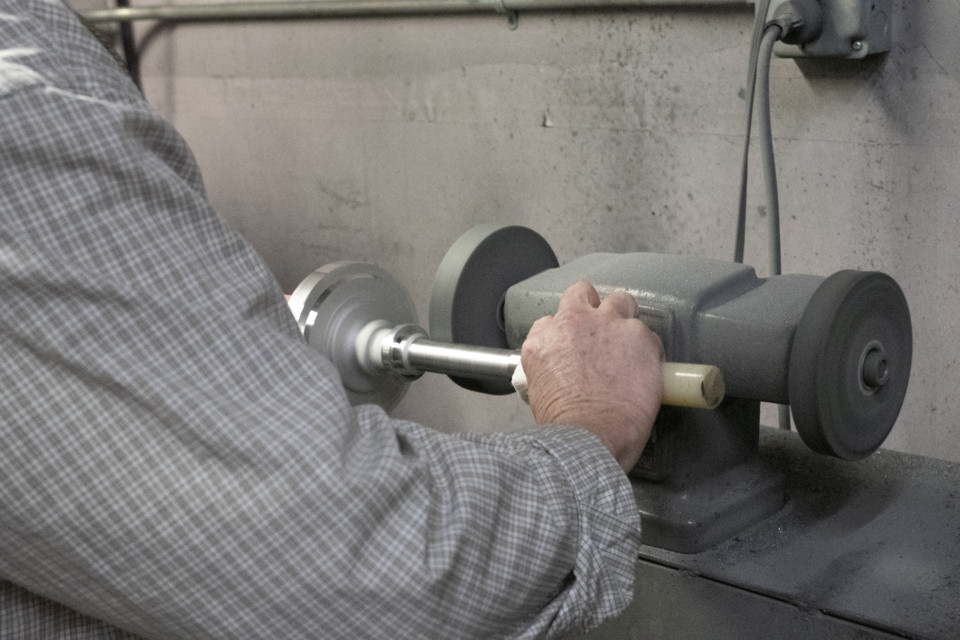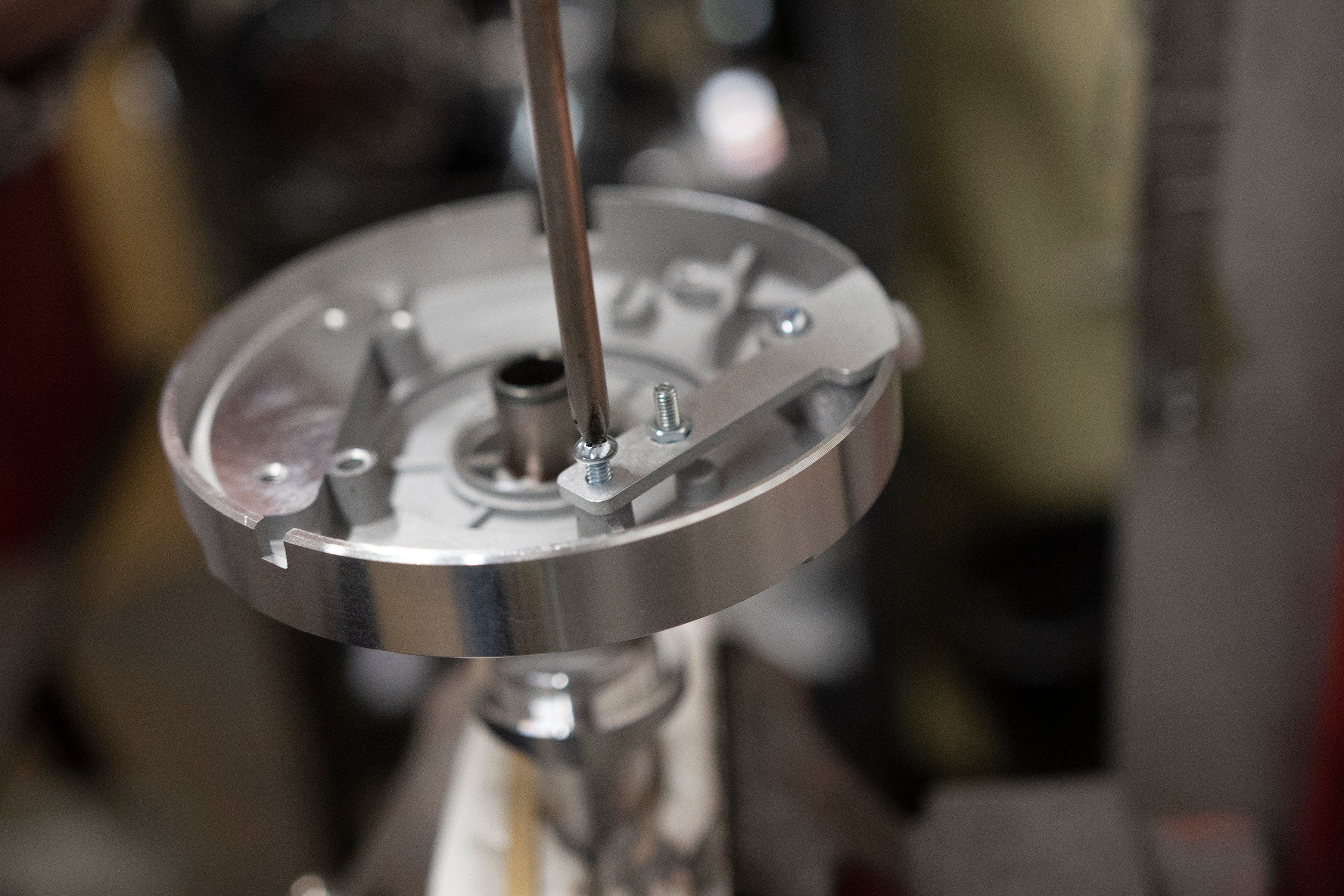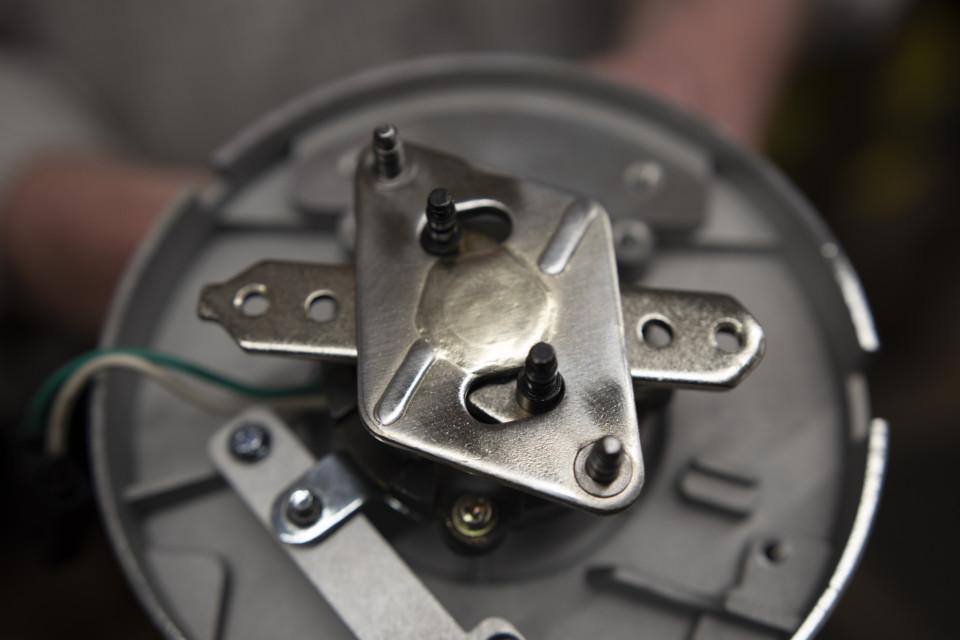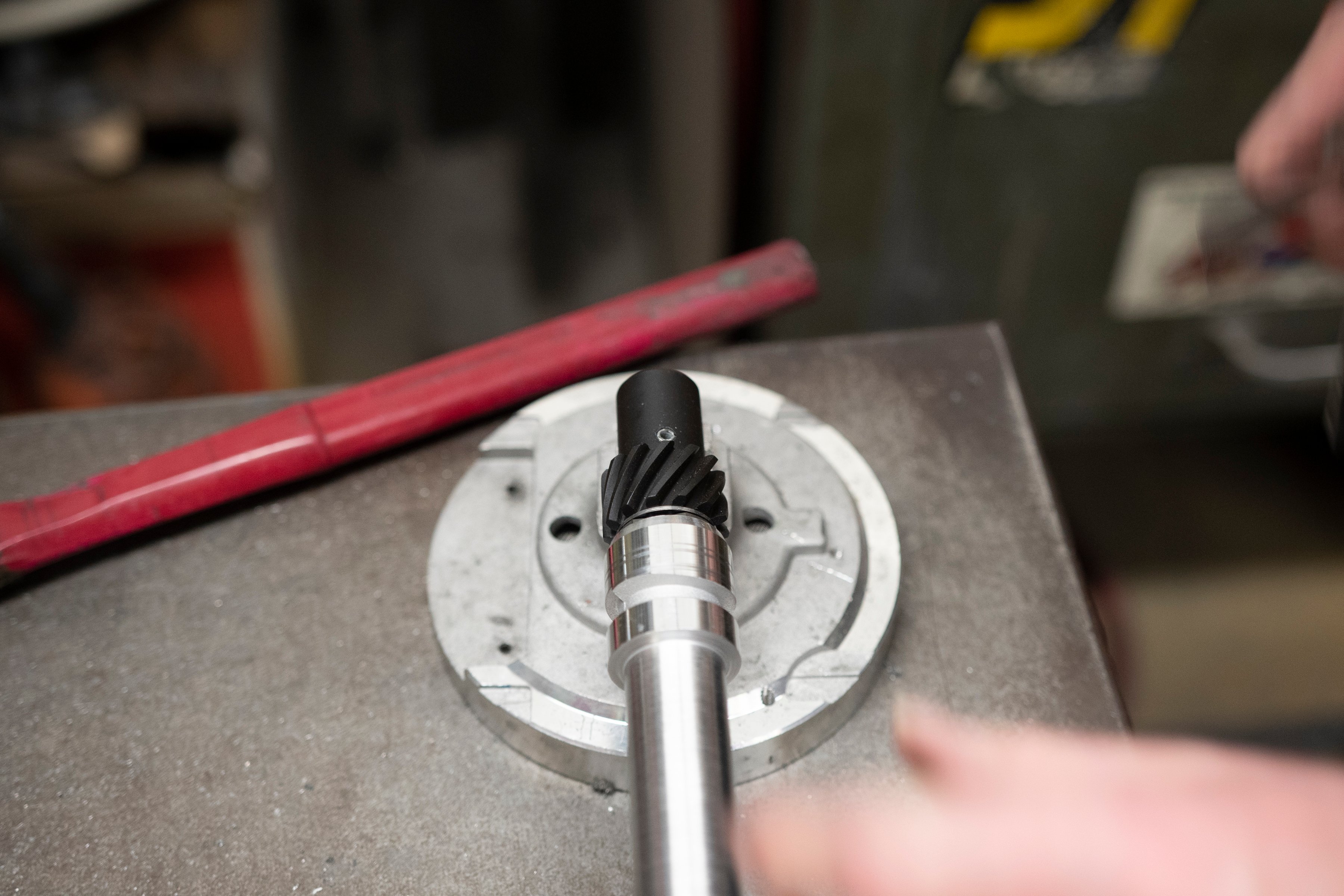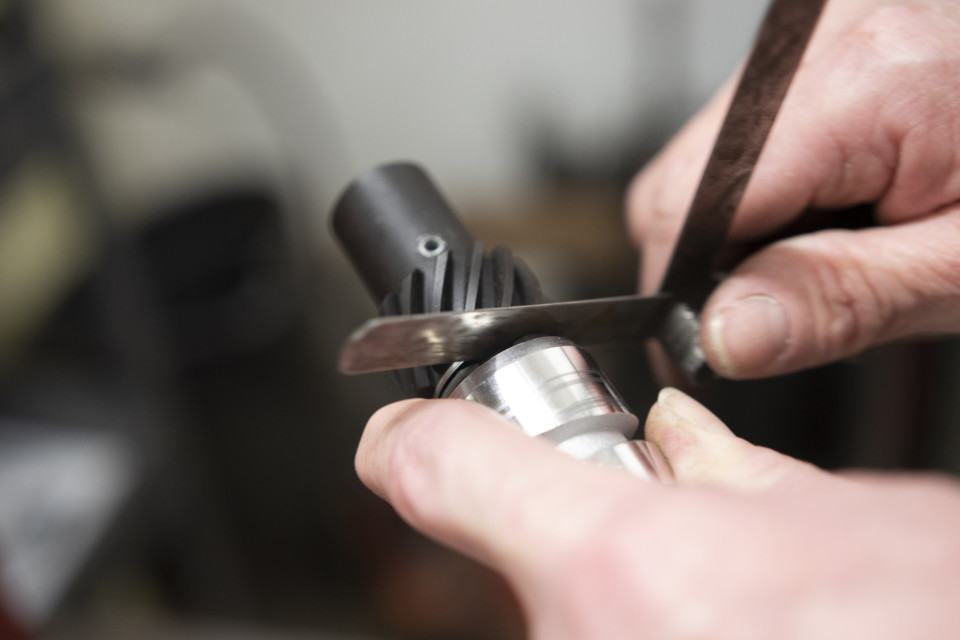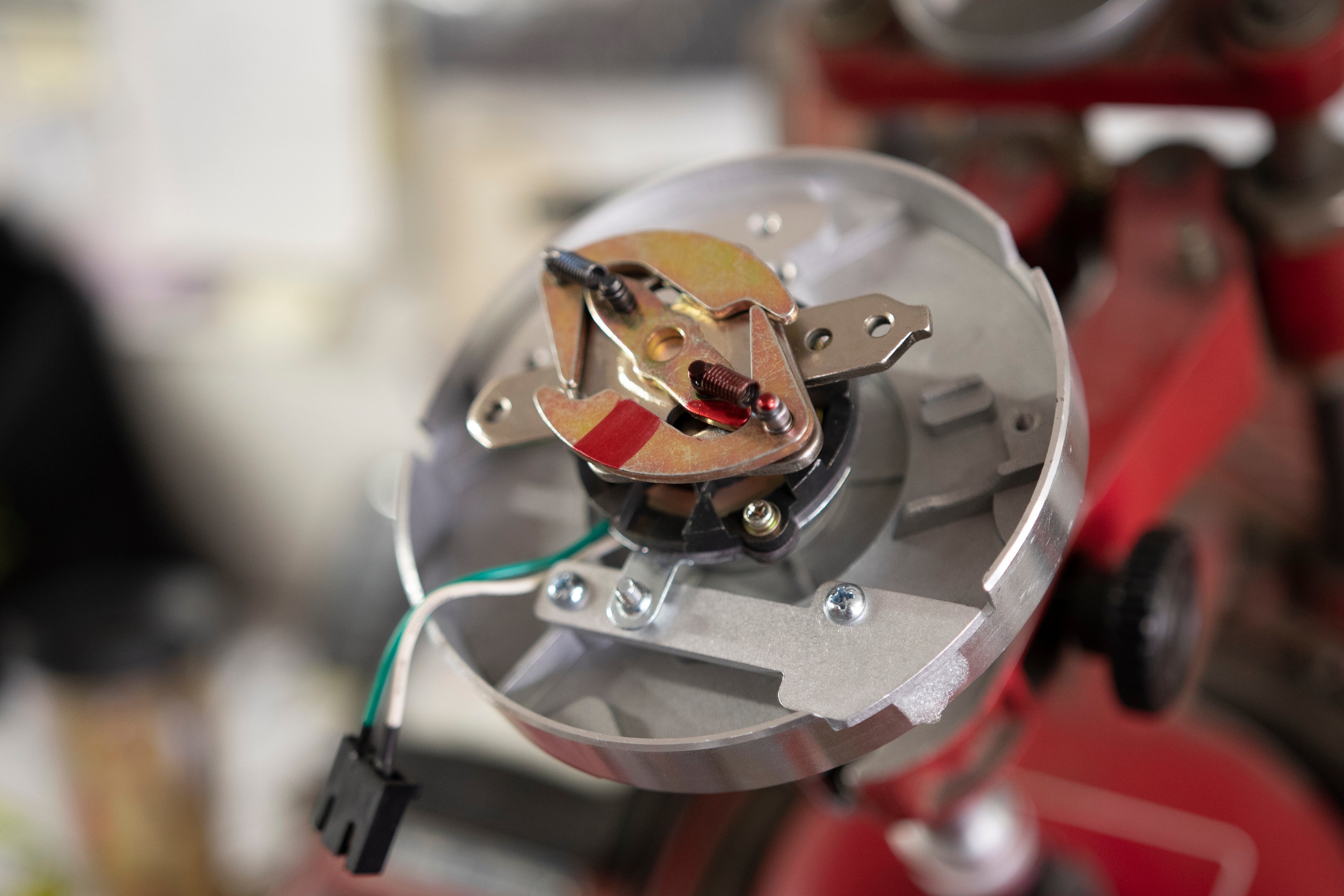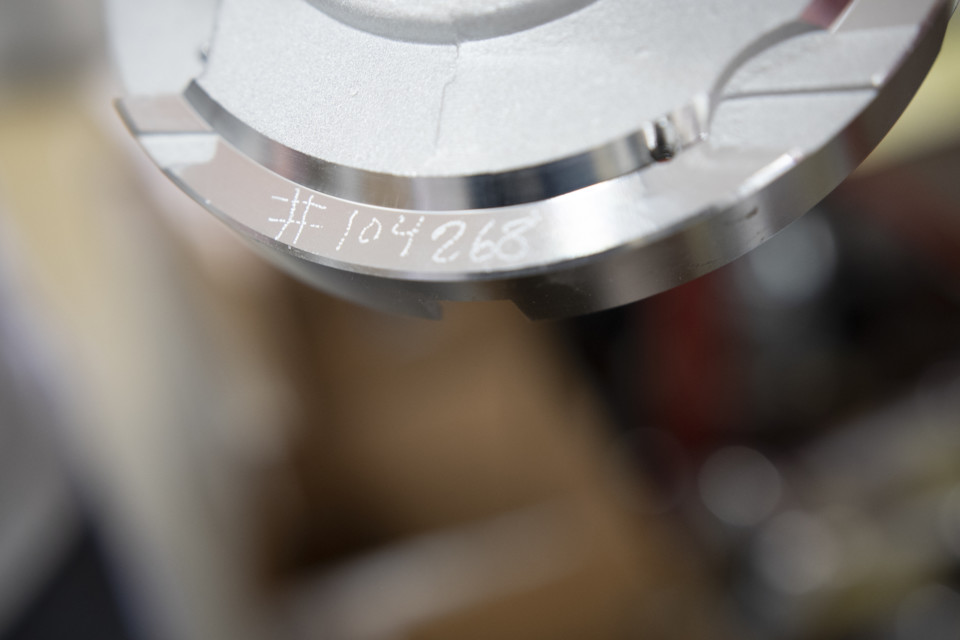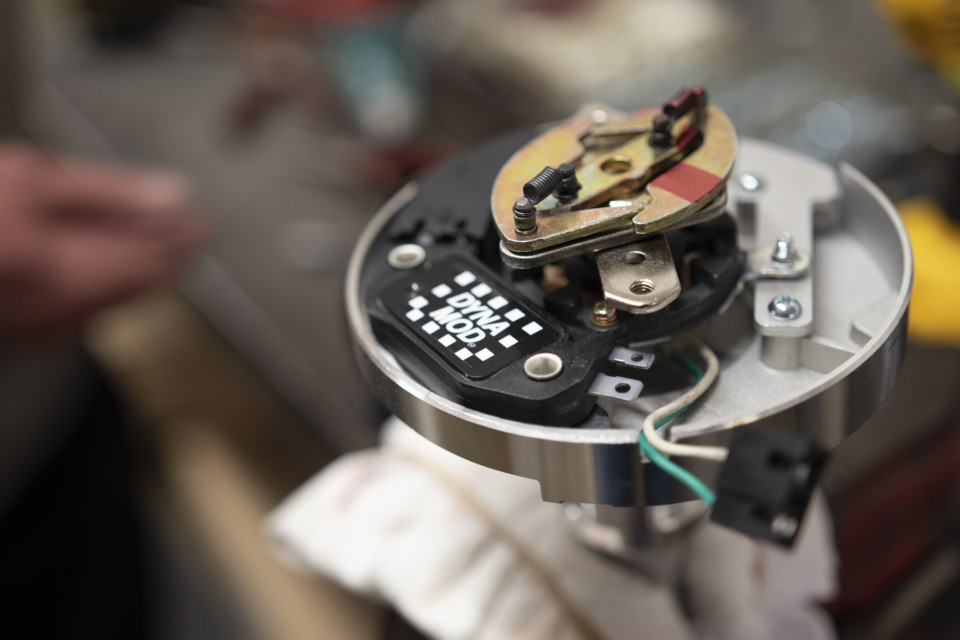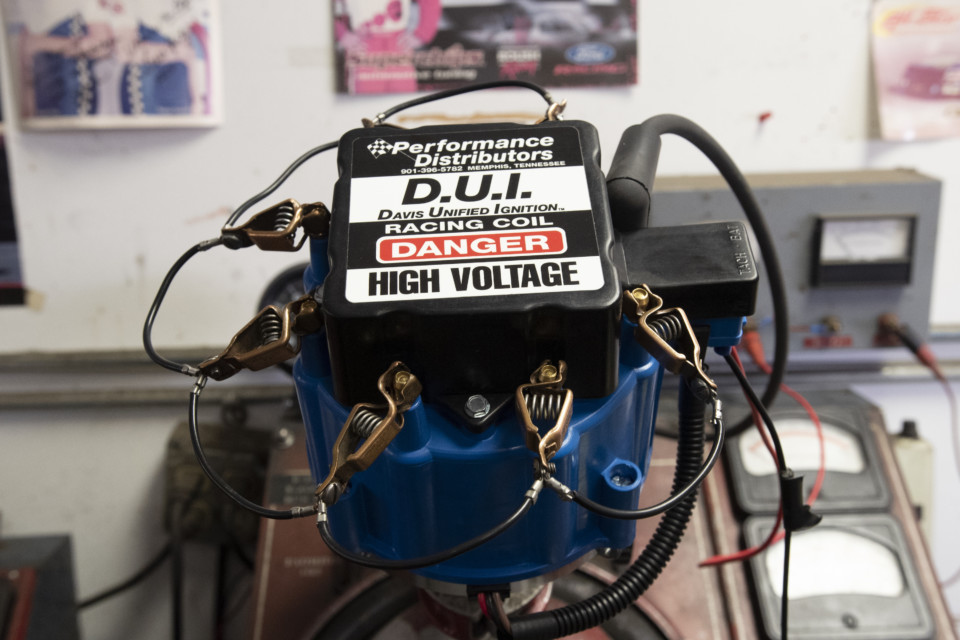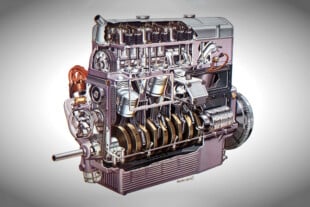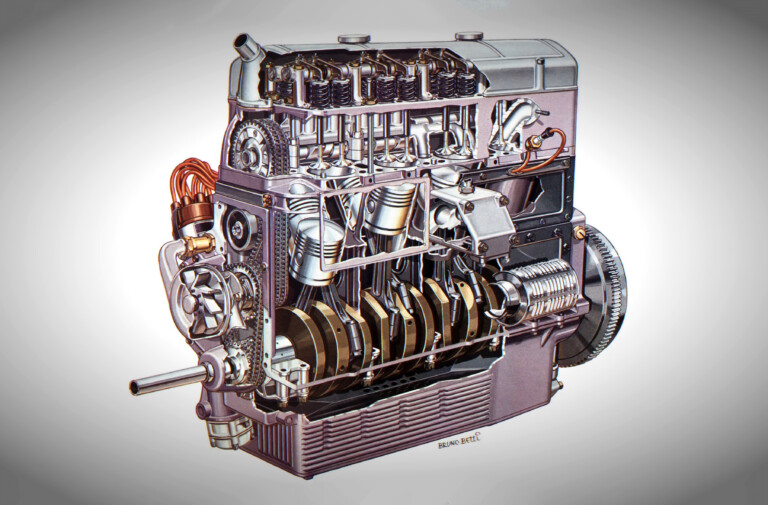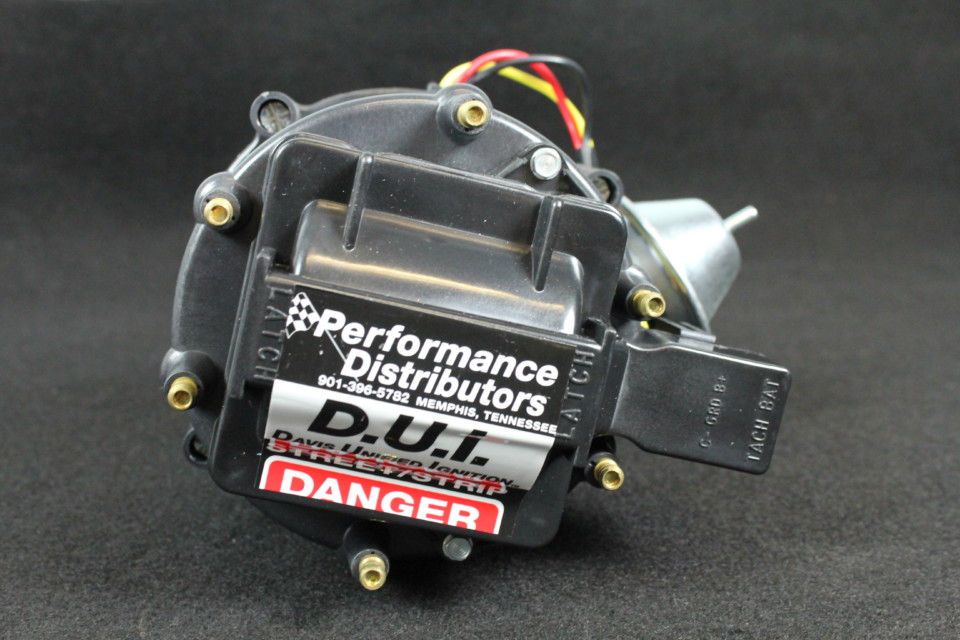
Performance Distributors in Memphis, Tennessee, puts a custom touch on every hand-built distributor shipped out of its shop.
In recent years, the trend in ignition systems is an individualized approach to tuning the ignition curve. This gives tuners the ability to offer something larger manufacturers can’t – an ignition system dialed-in to a specific application. Larger companies who make distributors and ignition boxes simply can’t achieve the same level of personal care with its mass-manufactured components.
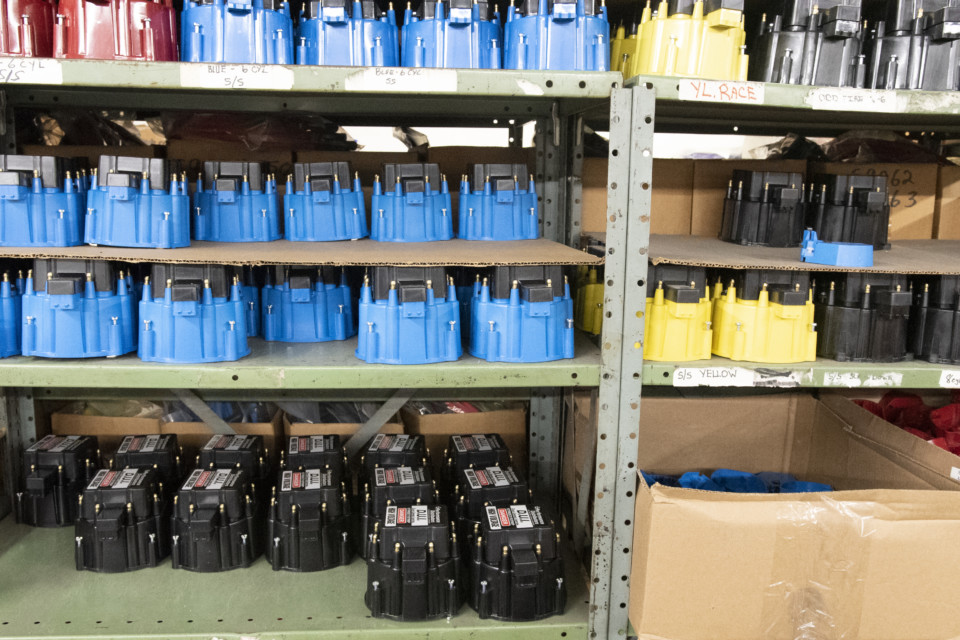
Large enough to be a major distributor company, but small enough to put the personal touch on every product made under its roof. Performance Distributors maintains an old-world quality and care philosophy.
Performance Distributors fills the gap between mass manufacturing and smaller tuners who dial-in components for a specific application. As company owner Steve Davis explained, “we produce enough components to be a large distributor, but still have the ability to put the extra level of care into our products that larger companies cannot.”
We decided to drop by for a visit to verify what Davis was telling us. True to form, the Performance Distributor team opened up the curtains and invited us inside to see the operation. We took full advantage and documented the process from start to finish.
About Performance Distributors
Based in Memphis, Tennessee, Performance Distributors has been producing its proprietary line of HEI-style distributors for more than 44 years. “We are still a family-owned and operated business which takes pride in our products bearing our family name,” said Steve.
Steve’s father, Kelly Davis, is attributed with designing the aftermarket industry’s first HEI performance distributor. Applying his background in drag racing and hot rodding, Kelly experimented with setting advance curves in HEI distributors, mastering the science. He passed these techniques down to Steve, who continues the mastery of advanced ignition-curve technology.
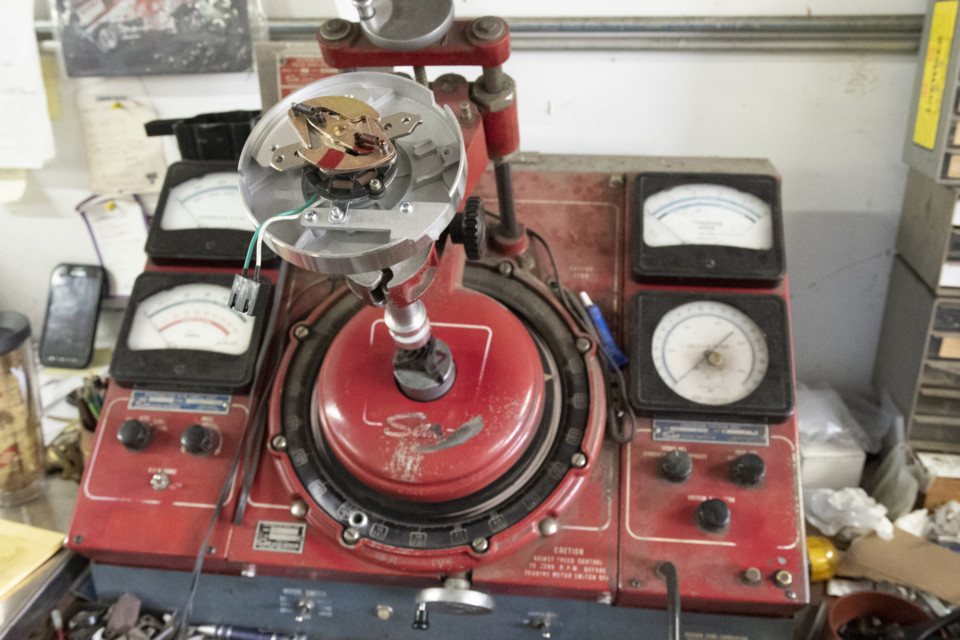
Every hand-built distributor is calibrated on a Sun distributor machine and test fired before shipping.
From these beginnings, Performance Distributors built a company where “every distributor is hand-built, calibrated on a distributor machine, and test fired before being shipped out,” claims Steve. “This process leads to customer satisfaction, and makes us proud to place our family name on our products.”
For What Application?
What we noticed about Performance Distributors was the wide-range of automotive genres that are supported by its products. Late Model Restoration (LMR) is a sales partner with Performance Distributors. This dispels the myth that HEI distributors are for GM products only, as LMR is a major source for all things Mustang. Also listed as sales partners are Summit Racing, American Muscle, Jegs, Speedway Motors, and Day Motorsports. This handful of companies cover everything from land speed and drag racing, to hot street performance, and local dirt track motorsports.
Plenty of parts for any application.
It would appear there is something for everyone within the walls of Davis’ Performance Distributors. The product line ranges from distributors, distributor caps and rotors, to spark plug wires, ignition coils, one-wire Ford alternators, and Dyna-Batt batteries. If it has anything at all to do with getting a spark to the engine, you can probably find it here.
If you can’t find what you are looking for, Davis says all you need to do is ask. “We have many options. If you want a distributor with a timing knob built in or a slip collar on the main shaft, we can do that,” he said. “If a customer wants the mechanical-advance locked out, we have a plate we can install to do that. Whatever they want, we can do.”
How A Hand-Built Distributor Is Made
The difference between hand-built and custom-tuned is not as broad as you might think. In fact, hand-built and mass produced have a bigger gap between the two styles. The difference in the performance curve between hand-built and mass produced is quickly summed up by Davis. “Other distributor manufacturers throw some springs in the box, and it is up to the customer to do some trial-and-error and hope for the best,” he said.
According to Davis, they keep a “stock supply of distributors with the most common curves on the shelf, but we still custom tune a lot of them.” The Sun Distributor machines are rarely used by many of the manufacturers. Because these machines are rare, Davis and crew have several for backup. “We have two that work good,” said shop manager Scott Sowards. “We have several in the warehouse for spares,” added Davis.
We wondered if buying a stack of mass-produced parts and assembling them by hand was enough to be considered hand-built? Maybe, but Performance Distributors takes it several steps further. “We stamp out our own weights, and the cams the weights are attached to,” explained Davis. “We have several different designs, and they are built to our specs. We don’t buy the curve kits that are on the market.” Sowards made it clear this was a quality-control component, and one of the most important parts of high-performance piece.
The Housing
We often fail to appreciate CNC machines and the work they do. There is a lot of programming skill that goes into machining a piece of billet aluminum and turning it into an automotive component. It is even more impressive when a component leaves the CNC machine and is hand-checked and machined to an even-tighter tolerance. This is what happens at Performance Distributors.
According to Davis, “We build the housing to the exact correct dimensions. This is critical and why we put each piece on a lathe.” Stability and correct dimensions help ensure the distributor will have a long and healthy life.
The housing gets fitted with ramps, blockout plates, and the timing ring prior to the inner shaft assembly.
The mating surfaces and housing are polished so the unit looks nice. “Polishing the housing has no performance benefit at all,” said Davis, adding: “We do that so when the customer pulls it out of the box it looks good. We want them to see and feel the craftsmanship we put into the distributor. It is as good on the outside as it is on the inside.”
Polishing and installing the inner shaft.
However, the main shaft is a different story. The Performance Distributor crew polishes the main shaft, paying close attention to the ramps the counterweights ride on by polishing them to an ultra-smooth surface. “This allows for precise movement of the weights, which keeps the ignition timing nice and smooth,” Davis explained. “We try to remove the drag or slowdown of the weight movement caused by a rough surface.”
Completing The Assembly
The main shaft is dropped down the housing and the magnetic pickup coil is installed. After the weights and springs are attached, the assembly crew attaches a distributor gear with a roll pin. The standard rules apply in gear material. If the engine is equipped with a roller cam, a brass gear is recommended. In most cases, a stock iron-gear will work just fine. Performance Distributors also offer a polymer gear which is compatible with any cam. You just need to request one when you order the distributor.
The drive gear is added to the bottom of the shaft and held in place with a roll pin.
According to Davis, “what is critical in the gear installation, is the end-play between the edge of the gear and the housing.” A feeler gauge is used to make sure the proper end-play is achieved. “We check every distributor before it leaves our facility,” he added. End-play that is too tight can bind up and tear up the distributor and camshaft. “In addition, we don’t want the teeth of the gear to get too far out of alignment with the teeth on the magnetic pickup coil. That is where the signal is triggered to the ignition module.”
After the weights are installed, one side of the weights, springs, and ramps are color-coded red to help with future re-assembly. This ensures the ignition timing remains the same as it was when shipped.
The weights, ramps, and springs are marked with red stripes on one side. Sowards says this is to assist customers who take the unit apart for any reason. “We put the red stripes on so customers can reinstall the components correctly. The red stripe faces up.” Davis added, “There could be slight differences if they put it together backwards. We want them installed the same way so it has the same timing as it did when it left here. That’s something my dad started years ago.”
The Module
The ignition module is added and a serial number is etched on the base of the housing. That serial number is also recorded to a build sheet the company keeps on file forever. “If someone changes a cam, they can call back and we can pull the sheet and see if anything needs to be done to the distributor,” explained Davis.
In many aspects, the ignition module is the brain of the unit. “This takes the place of dwell points in an HEI distributor,” said Davis. “The module has dwell built into it. We set a few more degrees of dwell throughout the RPM range. But, only enough to make performance improvements. We try to give the coil enough time to saturate and intensify the spark a little more, but not enough dwell time that it goes crazy and burns out the coil.”
The rotor and cap are added and the entire unit is then test fired. “We test fire every distributor before it leaves here,” Davis stated confidently. “We know they are going to work before they pass through the door.”
Final Touches
When it comes to the quality control process, the Sun distributor machine plays a huge role. Each distributor is spun on the machine and checked for critical timing points. This is where Sowards does his best work. “After we dial the number of cylinders in to the machine, we check the degrees of spark-advance to ensure the timing is correct for the application,” he said. “This also makes sure everything is in great working condition. Most of the time, we are looking for 10-12 degrees of advance.”
The ignition timing will change depending on the camshaft being used, the compression of the engine, and the application. “It’s going to make a big difference between drag racing or towing,” Sowards added. “Anything in the 13-14:1 compression range, we may put a few degrees less mechanical-advance in it compared to an engine with a 10:1 compression ratio. This is strictly to avoid detonation problems.”
Having toured the facility and talked to the team at Performance Distributors, we understand how the fairly large manufacturer works to put a personalized touch into every piece which comes out of the shop. That’s the distinction of owning an HEI distributor from Performance Distributors.


